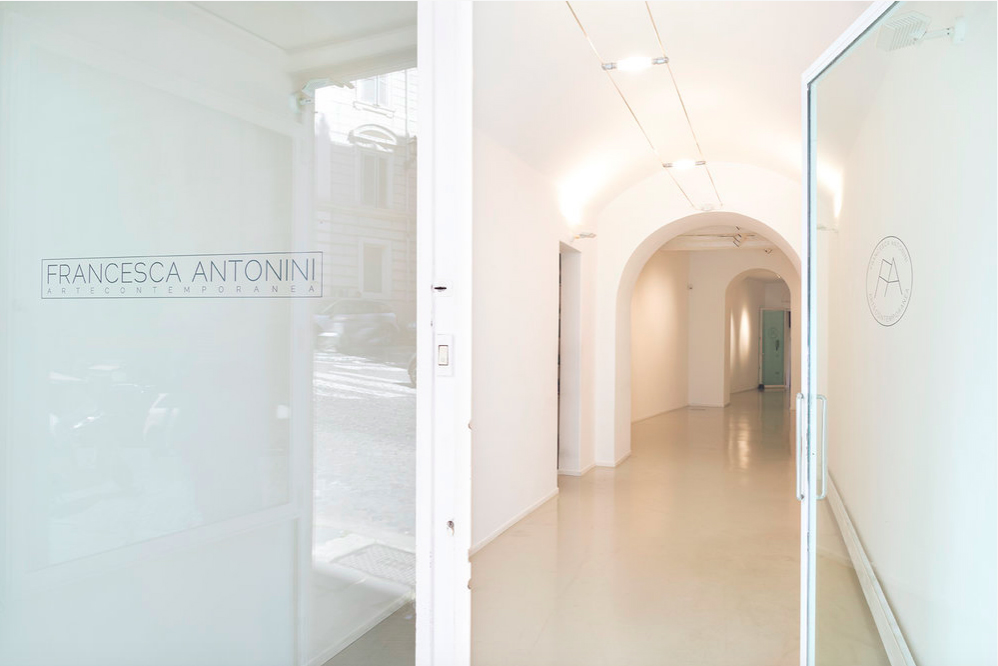Francesca Antonini Arte ContemporaneaFrancesca Antonini Arte Contemporanea
Simone Cametti
4.500 Gradi Kelvin
Francesca Antonini Arte Contemporanea presenta la terza personale di Simone Cametti (Roma, 1982), dal titolo 4.500 Gradi Kelvin, introdotta da un testo di Lorenzo Balbi. L’artista presenta un progetto complesso che sintetizza la sua ricerca sulla sostanza dei materiali e sulla dialettica tra natura e artificio e si articola in una selezione di sculture in marmo e installazioni luminose. Legato all’azione, al processo e alle relative trasformazioni, Cametti ragiona su luce e materia, sulla scorta di una delle nozioni fondamentali della fisica quantistica, secondo la quale «la materia non esiste, tutto è vibrazione!» (Max Planck, 1918). Il titolo fa riferimento all’unità di misura della tonalità della luce, e in particolare al valore della luce naturale nella sua massima visibilità, che si colloca a livello intermedio tra lo spettro dell’infrarosso e dell’ultravioletto: rispettivamente le radiazioni con maggiore e minore lunghezza d’onda. Il rosso e il blu sono gli estremi cromatici coi quali l’artista interviene sulle lastre di marmo di Carrara, dissimulando e al contempo valorizzando la raffinatezza della venatura di uno dei materiali scultorei più classici e preziosi.
Nella scelta del granito Splendid Gold, Cametti si concentra invece sulle caratteristiche fisiche di un materiale particolare, composto da grandi percentuali di quarzo e dunque contraddistinto da una struttura cristallina inconsueta. È proprio questa trama geometrica distintiva a suggerire la formalizzazione delle sculture, originate da una combinazione di moduli esagonali e dodecaedrici e installate a parete per mettere in discussione i confini tra pittura, installazione, scultura e design. L’illuminazione della mostra è interamente affidata all’intervento dell’artista, che ha voluto ricreare “la propria luce” a partire dal mezzo industriale delle lampade fluorescenti, ma facendole brillare sul valore di 4.500 gradi Kelvin, in modo da - nuovamente - agire sul filo tra natura e manipolazione tecnica.
Simone Cametti
4.500 Gradi Kelvin
Francesca Antonini Arte Contemporanea presents Simone Cametti’s (Rome, 1982) third solo show, entitled 4.500 Kelvin Degrees, introduced by a text of Lorenzo Balbi. The artist presents a complex project, summarising his research about the substance of materials and the dialectic between nature and artifice, with a selection of marble sculptures and light installations. Pivoting around actions, processes and resulting transformations, Cametti investigates light and matter, on the basis of one of the primary notions of quantum physics, according to which “matter does not exist, everything is vibration!" (Max Planck, 1918). The title refers to the unit of measurement of the hue of the light, and in particular to the value of natural light in its maximum visibility, which is at an intermediate level between the infrared and ultraviolet spectrum: the radiations with wider and narrower wavelengths. Red and blue are the chromatic extremes the artist applies on Carrara marble slabs, concealing and at the same time enhancing the preciousness of the veining of one of the most classic and refined sculptural materials.
Choosing Splendid Gold granite, furthermore, Cametti focuses on the physical characteristics of a peculiar material, composed of large percentages of quartz and therefore characterized by an unusual crystalline structure. It is precisely this distinctive geometric texture that suggests the formalization of the sculptures, originated from a combination of hexagonal and dodecahedral modules and installed on the wall to question the boundaries between painting, installation, sculpture and design. The lighting of the exhibition is entirely entrusted to the intervention of the artist, who aims at recreating "his own light", starting from the industrial medium of the fluorescent lamps, but making them shine on the value of 4.500 Kelvin degrees, so as to, again, act at the threshold between nature and technical manipulation.
